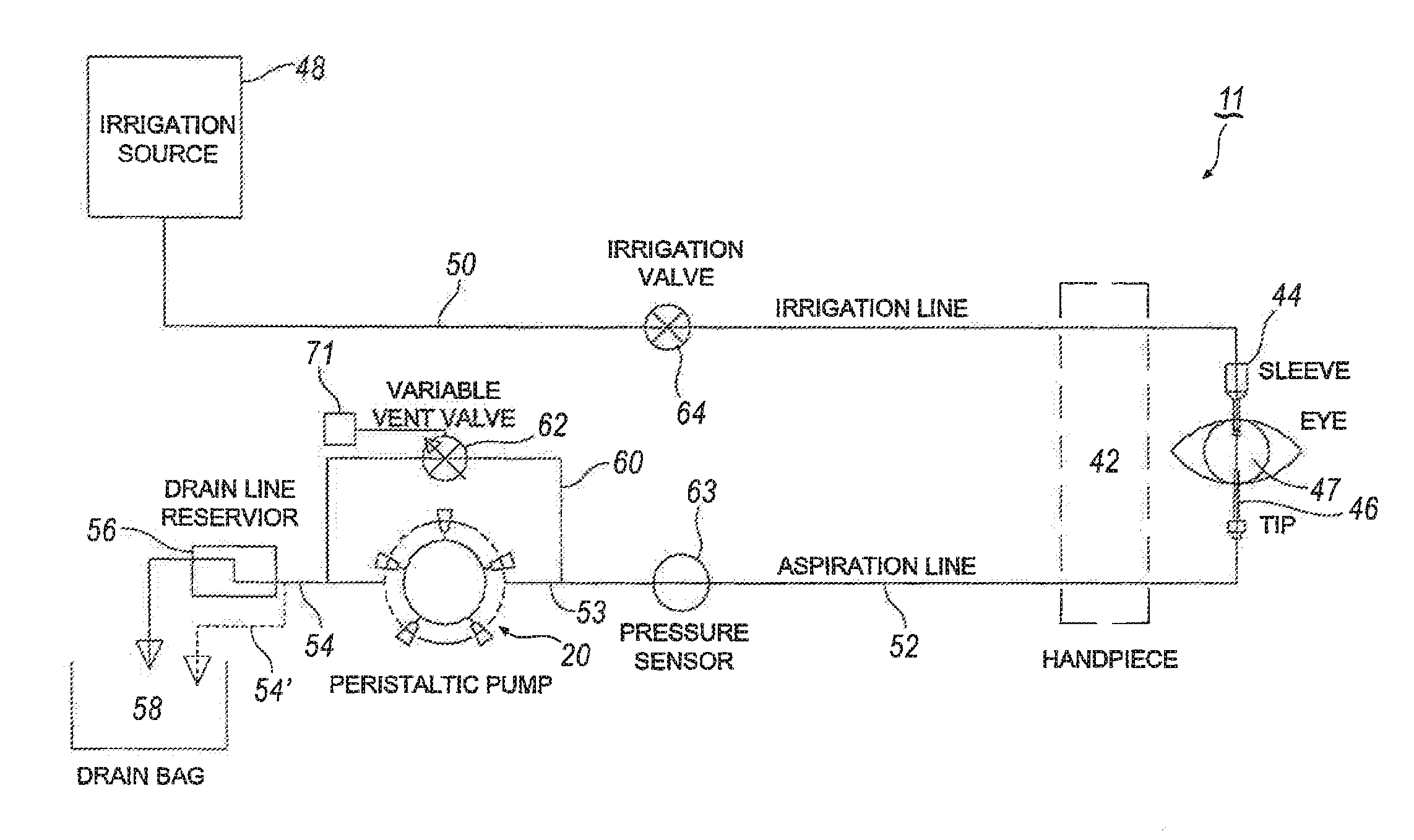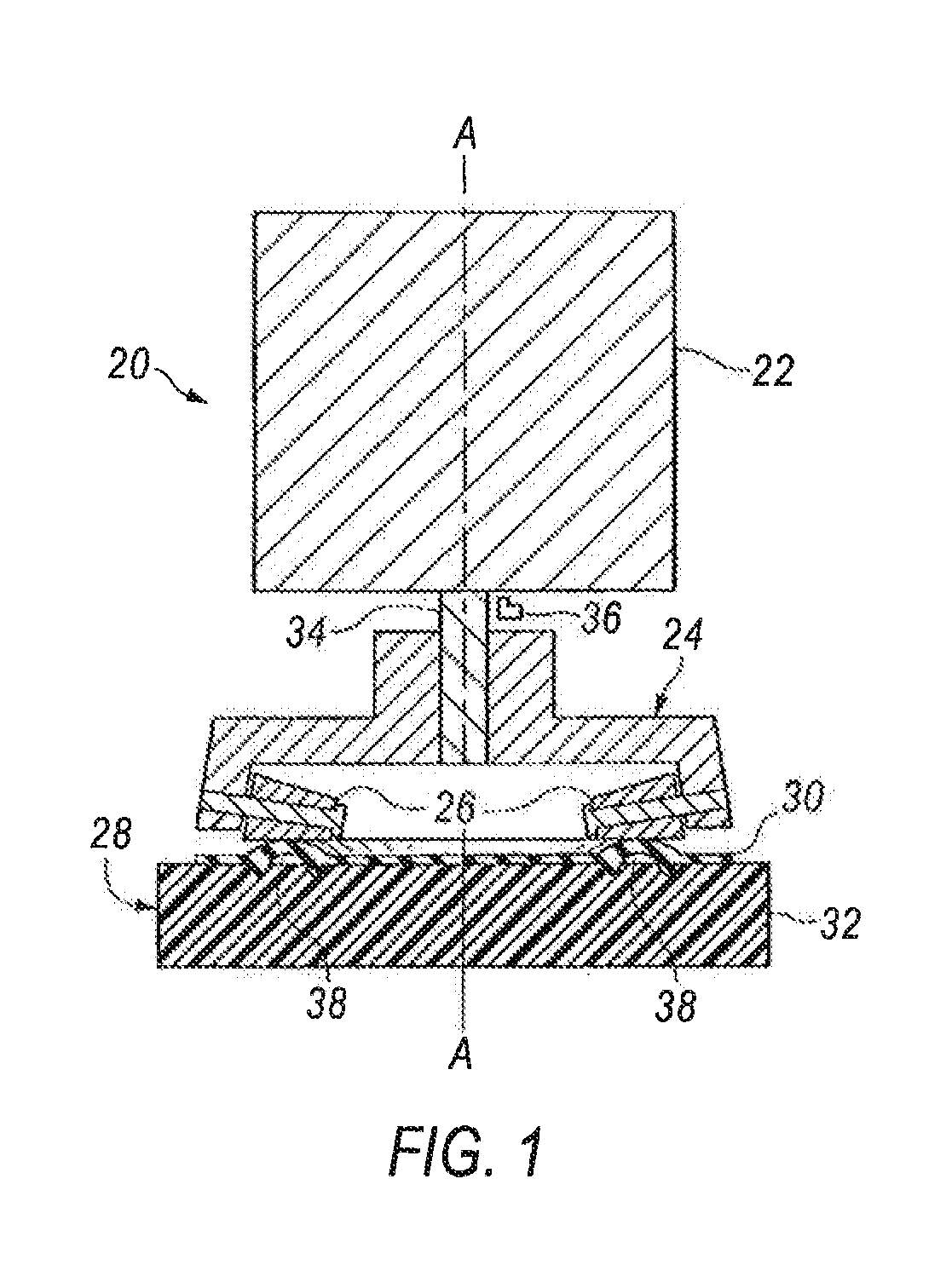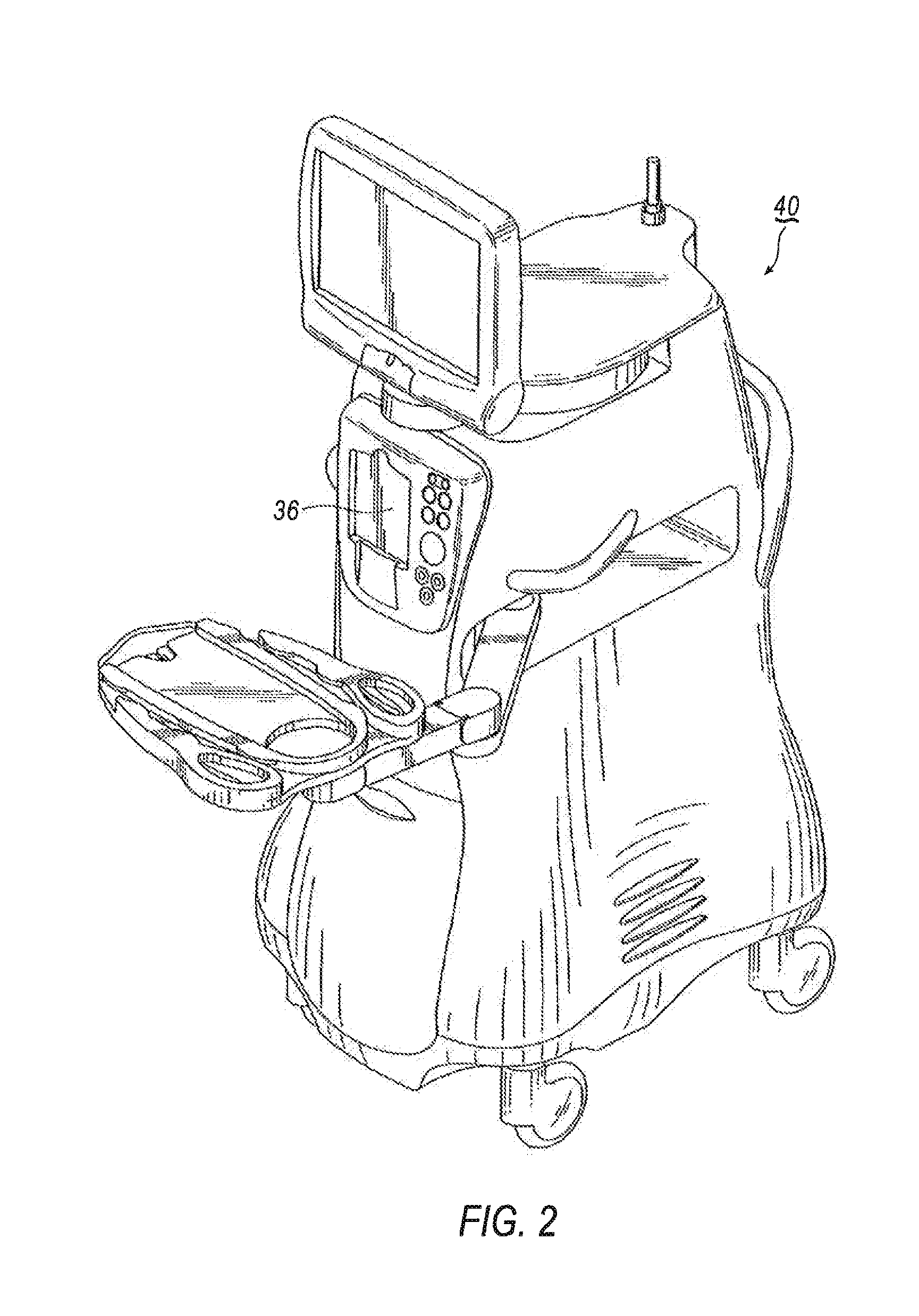Selectively Moveable Valve Elements for Aspiration and Irrigation Circuits
a valve element and valve body technology, applied in the field of surgical systems and methods, can solve the problems of reducing the effectiveness of lens removal, increasing the risk of anterior chamber shallowing or collapse, and deteriorating vision, so as to increase the overall surgical time, and reduce the effect of lens removal
- Summary
- Abstract
- Description
- Claims
- Application Information
AI Technical Summary
Benefits of technology
Problems solved by technology
Method used
Image
Examples
Embodiment Construction
[0037]Referring now to the discussion that follows and also to the drawings, illustrative approaches to the disclosed devices and methods are shown in detail. Although the drawings represent some possible approaches, the drawings are not necessarily to scale and certain features may be exaggerated, removed, or partially sectioned to better illustrate and explain the present disclosure. Further the descriptions set forth herein are not intended to be exhaustive or otherwise limit or restrict the claims to the precise forms and configurations shown in the drawings and disclosed in the following detailed description.
[0038]Phacoemulsification machines are typically used in cataract eye surgery to remove cataract-affected eye lenses, such machines typically employ fluidics systems for introducing irrigative fluid into the surgical site, as well as providing aspiration from the surgical site to remove emulsified tissue. In some known systems a positive displacement system, such as a pump,...
PUM
 Login to View More
Login to View More Abstract
Description
Claims
Application Information
 Login to View More
Login to View More - R&D
- Intellectual Property
- Life Sciences
- Materials
- Tech Scout
- Unparalleled Data Quality
- Higher Quality Content
- 60% Fewer Hallucinations
Browse by: Latest US Patents, China's latest patents, Technical Efficacy Thesaurus, Application Domain, Technology Topic, Popular Technical Reports.
© 2025 PatSnap. All rights reserved.Legal|Privacy policy|Modern Slavery Act Transparency Statement|Sitemap|About US| Contact US: help@patsnap.com



